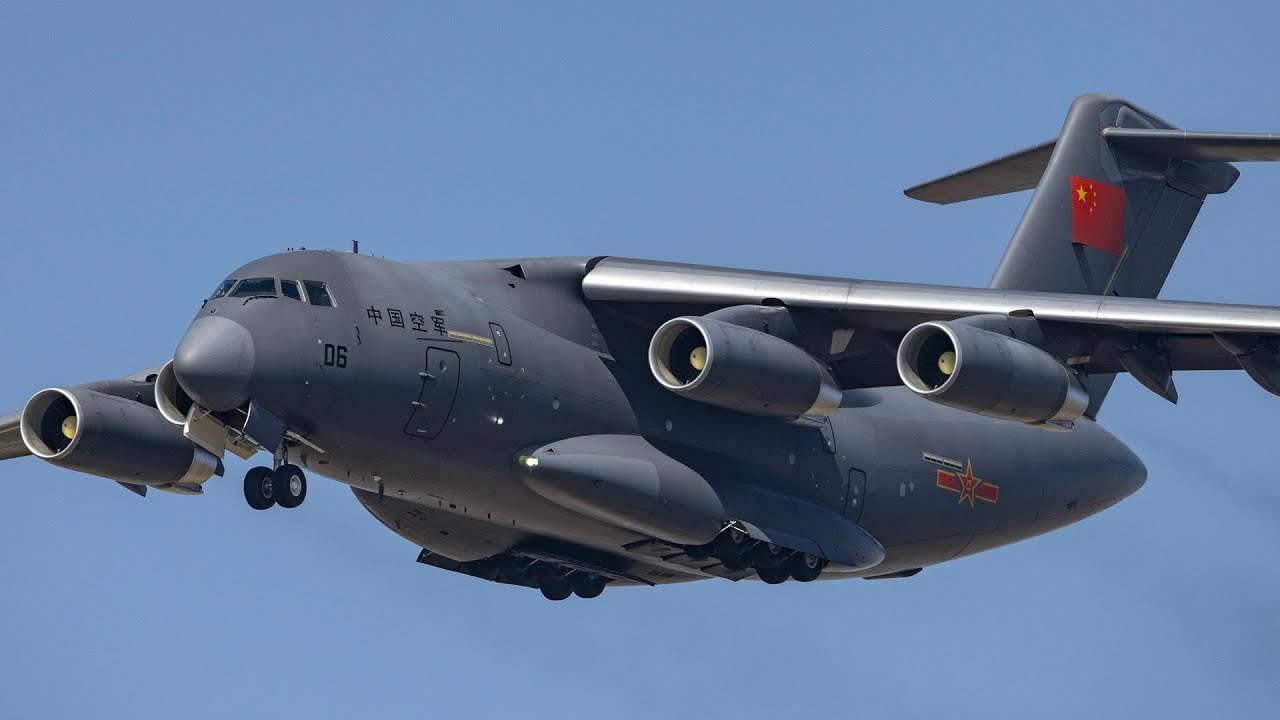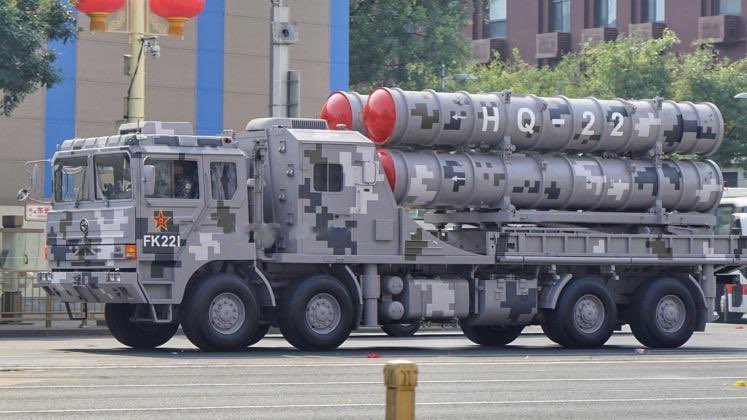Since Russia launched an invasion of Ukraine more than 45 days ago, Europe’s airspace has seen a jump in air traffic with military aircraft going back and forth with arms and aid. However, European skies saw some very unusual visitors in Serbia, one of Russia’s few allies in the region.
Canada’s ‘Black Friday’: Sabotaged By US Or Smuggled To UK – What Happened To RCAF’s Avro Arrow Fighter Interceptors?
In a surprising move, six People’s Liberation Army Air Force (PLAAF) Y-20 cargo jets recently flew to Serbia through Turkish airspace, surprising flight trackers and aviation watchers. The aircraft was first spotted just north of Istanbul in Turkey.
Following the sighting of the aircraft, Chinese analysts (unaware of the actual purpose of the visit) speculated that it could be the greatest international operation yet by a Chinese-developed heavy transport plane, demonstrating the country’s strategic transport capabilities, Global Times reported.
“This was my cue to bring up both Flightradar24 and my ADSBexchange selective database that includes Y-20A/U known hex codes,” flight tracker Evergreen Intel told The War Zone. “Sure enough, the different apps showed other Y-20s along the same flight route, spaced out about 100km apart stretching from Istanbul to almost the Georgian border.”
According to the analysis of the flight trackers, military aircraft with MLAT have been going into Poland for delivery of weapon systems ever since the war started. MLAT is a military technology that uses a process known as Time Difference of Arrival to correctly locate aircraft, many of which do not want to be “seen.”

The unexpected Chinese cargo aircraft landed at the Nikola Tesla International Airport in the Serbian capital, Belgrade. Aviation watchers noticed Chinese markings on the cargo jets on the final approach and the tarmac.
At least some of the planes’ chaff and flare countermeasures systems had their coverings removed, according to observers, The War Zone noted. They appeared to have been outfitted with live countermeasures, which would indicate that they were anticipating a threat. However, the nature of that threat could only be specified by the PLA Air Force officials.
Interesting find by @Prova_61 ? … In fact I have never seen before this, what appears to be the hatch removed for the chaff & flare dispenser boxes.
(Images via @铁马军戈战沙场 from Weibo) pic.twitter.com/3xBOrkMlmI
— @Rupprecht_A (@RupprechtDeino) April 9, 2022
Even as there was no official Chinese announcement on the matter, Chinese military observers stated that the deployment of six Y-20 heavy transport aircraft could signal an unprecedented overseas mission.
It’s a first for a foreign mission to include six Y-20s, and it’s also unusual to see so many Y-20s deployed at the same time, said Fu Qianshao, a Chinese military aviation expert, told the Global Times.
According to Fu, the operation demonstrates a considerable advance in the PLA Air Force’s long-range strategic transport capabilities, as well as the heavy transport aircraft’s intercontinental logistics support and maintenance capabilities.
Why Did Y-20s Undertake The Flight To Europe?
The Y-20 has previously been used by China on missions to Europe. The PLA, for example, used a Y-20 to transport 105 PLA honor guard personnel to Moscow in June 2020 for the Russian Victory Day celebration.
However, to reach Serbia from China, the Y-20s would have to fly through multiple nations which would mean that China must have had extensive coordination and communication with the governments of the countries that it would have to pass through, a Chinese analyst speculated.
But the Chinese experts could not ascertain why the aircraft undertook a flight to Serbia at a time when a war is raging between Russia and Ukraine.
It is pertinent to mention that Serbia is a close Russian ally that has condemned the war but has stopped short of imposing sanctions on Russia. Serbia also enjoys a close relationship with China.
Later, reports indicated that the Chinese cargo aircraft that caused ripples were dispatched to the Balkan state for delivering a sophisticated Chinese anti-aircraft system to Belgrade. However, China has maintained that only “regular military supplies” were delivered to Serbia.

The Washington Post described it as a “semi-secret operation” that raised concerns in the west regarding an arms buildup in Serbia at the time of a war that could potentially threaten the peace in the Balkan region that remains fragile.
According to media and military experts, the fleet of aircraft delivered HQ-22 surface-to-air missile systems for the Serbian military. Experts viewed the transfer of armaments over the territory of at least two NATO member states, Turkey and Bulgaria, as a symbol of China’s expanding global reach.

During the 1990s, Serbia was embroiled in a conflict with its neighbors. The country, which has formally applied for EU membership, has already begun to strengthen its military forces with Russian and Chinese weapons, including aircraft, battle tanks, and other equipment.
The West is concerned that Russia and China arming Serbia may encourage the Balkan country to fight again, particularly against Kosovo, which declared independence in 2008 with American help. Serbia, Russia, and China do not recognize Kosovo’s independence as opposed the western world.
The Serbian President Aleksandar Vucic had previously claimed that NATO nations, which constitute the majority of Serbia’s neighbors, had refused to let the system’s delivery planes pass over their territory due to concerns over Russia’s aggression against Ukraine.
According to this video, FK-3 is a quite different system from HQ-22.
Something under the radar since a few months…#China #Serbia #FK3 #CASIC pic.twitter.com/elGdeYBfkt— pir3 (@pir34) April 10, 2022
In the face of these claims, Chinese aircraft finally making it to the Serbian airport indicates the Chinese influence in the region. Both China and Russia are close partners of Serbia which often finds itself isolated with NATO countries surrounding it.
Serbia was to initially buy the Russian S-30O but later settled for the Chinese HQ-22 due to the high cost of the Russian system. In 2020, US officials cautioned Belgrade against buying HQ-22 anti-aircraft systems, which are also known as FK-3 in their export variant.
Even though it has a lesser range than more advanced S-300s, the Chinese missile system has been frequently compared to the American Patriot and Russian S-300 surface-to-air missile systems. Serbia will be the first European country to use Chinese missiles now, a precedent that would not be appreciated by the United States amid rising tensions with China in the backdrop of a Russian invasion.
However, it does open the possibility of China gaining ground in Europe as the Russian defense industry is now struck with sanctions. The success of Chinese systems in the region could thus be unsettling for the West saw an opportunity to substitute Russian defense hardware.
- Contact the author at sakshi.tiwari9555@gmail.com
- Follow EurAsian Times on Google News




